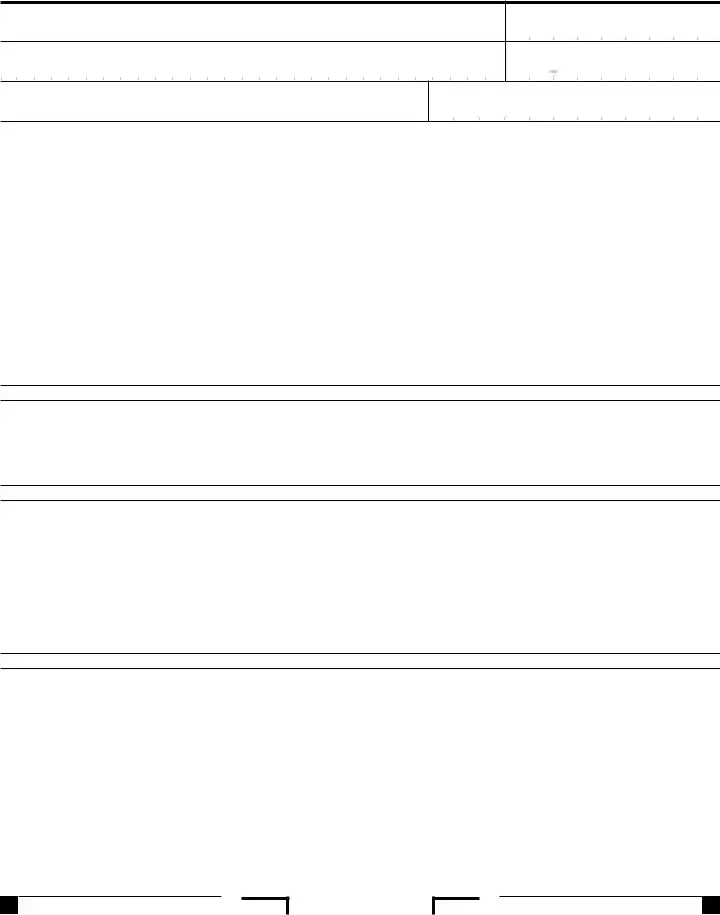The California 3805Z form is closely related to other tax forms that facilitate the reporting of various tax credits and deductions across different jurisdictions and tax circumstances. Each of these forms plays a vital role in enabling taxpayers, whether individuals or businesses, to navigate the complexities of tax regulations, ensure compliance, and maximize their financial benefits under the law. The similarities between the 3805Z form and these other documents largely lie in their purpose, structure, and the kind of information they collect, though each is tailored to specific tax benefits or geographic regions.
First, the Federal Form 1040, the U.S. Individual Income Tax Return, shares commonalities with California's 3805Z, particularly in its function to compile various income sources, deductions, and credits to calculate the tax owed or refund due to an individual. While Form 1040 covers federal tax liabilities, the 3805Z is specific to California's tax incentives related to enterprise zones, highlighting how both serve as crucial end-of-year summaries for taxpayers.
Second, the California Form 540, the state’s individual income tax return, is similar to the 3805Z as it is the primary document used by California residents to report their income to the state taxation authorities. Both forms are integral to California’s tax regime, with Form 540 being broader in scope, while 3805Z deals specifically with enterprise zone credits and deductions.
Third, the Federal Form 3800, General Business Credit, parallels the 3805Z form in its collection and calculation of various business-specific tax credits. Form 3800 is used by businesses to compile credits from multiple sources at the federal level; contrastingly, form 3805Z consolidates credits within the niche of California enterprise zones, illustrating how both forms aid in reducing taxable income through different incentives.
Fourth, the California Form 3544, Election to Aggregate Credits, operates in tandem with the 3805Z by allowing businesses and individuals to manage and maximize state tax credits. While Form 3544 organizes the application of multiple credits across various parts of a business or multiple enterprises, Form 3805Z focuses on capturing the specifics of enterprise zone benefits, showcasing the interplay between broad credit management and specific tax incentive claims in California.
Fifth, another document that has parallels with the 3805Z form is the New York State Empire Zone Credits form. Though specific to New York, this form functions similarly by offering tax incentives for businesses and investments within designated Empire Zones. It underscores a common approach among states to stimulate economic development in targeted areas through tax benefits, reflecting the 3805Z's purpose within California’s landscape.
Sixth, the Texas Margin Tax Report, while distinct in its focus on Texas's franchise tax, shares the concept of incentivizing certain business activities through tax advantages. Like the 3805Z, it involves detailed reporting of business income and activities to calculate tax liabilities, indicating how different states enact specific forms to administer their unique tax incentive programs.
Seventh, the Federal Form 8826, Disabled Access Credit, is an example of a more targeted tax incentive document, similar to sections of the 3805Z form that focus on specific credits. This form allows businesses to claim credits for expenditures made to improve access for disabled individuals, highlighting the targeted nature of tax credits in addressing particular policy objectives.
Eighth, the Oregon Enterprise Zone Tax Credit form mirrors the 3805Z in offering incentives for investments and employment within designated enterprise zones. It showcases the similarities in objectives across state lines, where local governments utilize tax forms like these to foster economic growth in underserved regions, hence demonstrating a common framework for regional economic stimulation through tax policy.
Through these examples, it becomes evident that the California 3805Z form is part of a broader tapestry of tax documents across different levels of government, each designed to capture the nuances of various tax credits and deductions. While the specifics of each form may vary, their collective goal remains to encourage economic activities aligned with policy goals, whether through stimulating business investments, rewarding job creation, or facilitating targeted improvements, thereby reinforcing the importance of understanding and utilizing these forms effectively within the tax preparation process.


